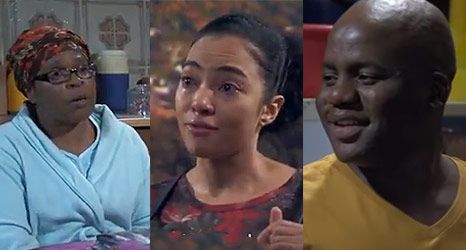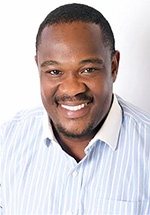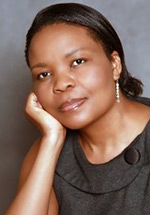 A | B | C
A | B | C
A team of 10 writers, one Head Honcho and a show that has to go out every night of the week.
This is the behind-the-scenes reality at Skeem Saam.
One moment there's nothing but a blank page and hours later there's a whole world of characters and their drama.
How does this happen?
TVSA chatted to Skeem Saam's script editor and writer Lunga Radebe who shared how Skeem Saam gets written:
The A, B, Cs
Every storyline gets structured according to a letter of the alphabet - a practice that extends to all soapies e.g. the storyline involving MaNtuli and her moolah would be storyline A, the storyline about Lelo and Lehasa would be storyline B and Leshole's aeroplane storyline would be storyline C.
 Lunga Radebe
TVSA:
Lunga Radebe
TVSA: So how does it work? How does it start? How does the process of writing happen?
Lunga: Every now and then we meet as a team to have a general brainstorm of where we think the story should go and so forth.
Then the stories that are taken from that process are allocated to the storyliners who plot out beat-for-beat where a story is going, scene-for-scene and so forth.
For example, a storyliner will be given storyline A, maybe let's say Lehasa is a big arc that's coming in and they will plot it scene-for-scene. And then another storyliner will get story B and C and so forth.
This happens weekly so once that is done, those beats are forwarded to what is known as a structurer. The structurer then compiles beats into actual episodes - it's very mathematical so they'll take about eight scenes from the A story and maybe five scenes from the B story and three scenes from the C story to compile an episode.
Once they've done that, and they've compiled it to maybe six episodes, those outlines/beats are then allocated to scriptwriters and the scriptwriters will put life to the world, write the actual dialogue and so forth.
It's a whole machine which moves from brainstorming to storylining to structuring and then to the scriptwriters.
Once the scriptwriters are done, they send all their scripts to me, the script editor, and I then check for continuity and fluidity of language to see if things are corresponding so that there's one voice.
My job is essentially to preserve a unified voice while preserving the individual writers' voice at the same time. Then that's when the scripts are sent are sent through to production - by production I'm referring to the directors and so forth and to the actors.
 Winnie Serite
TVSA:
Winnie Serite
TVSA: Is there a head writer?
Lunga: Yes and no. Our Executive Producer (Winnie Serite) plays the role of the head writer. She sort of guides the story world for us. We work in tandem with her - she's very instrumental in guiding the story.
She meets with the storyliners and then meets up with us, the entire team, on a quarterly or monthly basis - that's when we meet as an entire team to brainstorm where the story is going.
 TVSA:
TVSA: Where does all that happen? At the Skeem Saam studios?
Lunga: For the big brainstorms we will go out to a conference centre and just spend the whole day, maybe like 10 hours or so. It's a whole day of rigorous brainstorming and then, for the weekly meetings, with the storyliners, that happens at the studios at Sasani.
We have a scriptwriters conference room there where we flesh out beat-for-beat where the story's going.
Part of my responsibility is to meet with the entire production so I represent the script department weekly for what is called a pre-production meeting.
That's where all the heads of department i.e. wardrobe, make-up and so forth get the scripts for what is referred to as a block.
Every week we get six episodes that I have to edit and that I send to the production team so everyone gets to read them and the director gets to prepare what their vision is for the block.
We meet, usually on a Monday or so, with the entire team, for three hours or so, where the director says what they envisioned for the block and they throw story questions at me.
Maybe the script manager comes in and our resident writer, so they throw questions at us about certain points, if things are not clear like details - maybe the wardrobe lady will want to know if the character is in uniform when they leave the house - things like that - things that aren't necessarily clear in the script, that we haven't picked up.
After that process, we get notes and then we implement those notes so that by the time the actors get scripts and the script is shot, the script is clear with no mistakes.